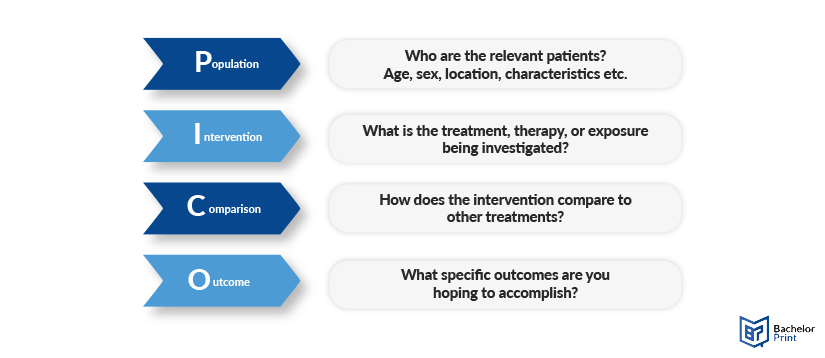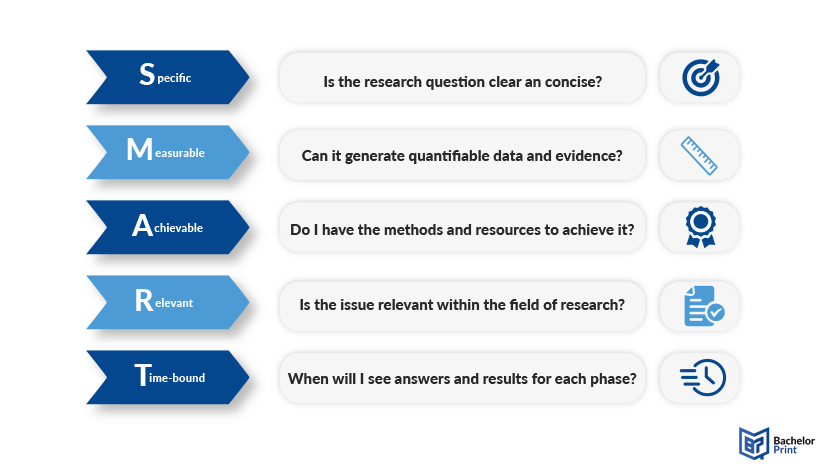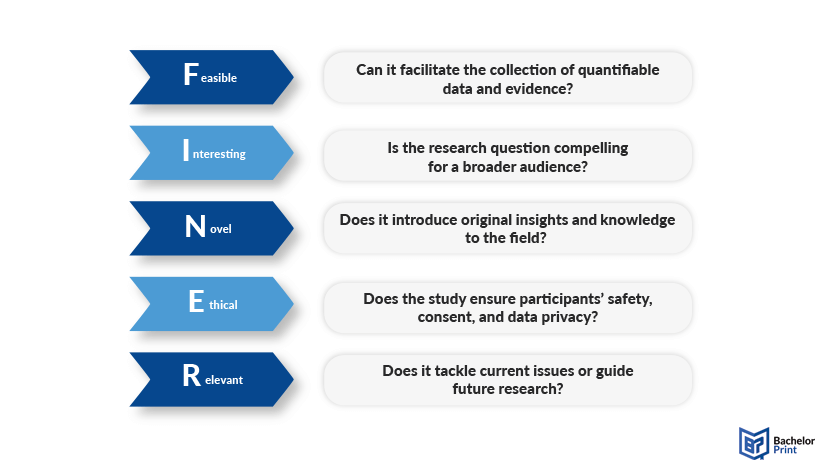
At the heart of every research endeavor lies a fundamental driving force: the research question. It not only defines the scope and direction of inquiry, it also inspires people to seek knowledge. In the complex journey of the research process, key questions act as guiding stars. In this article, we’ll cover everything you need to know about research questions and provide various examples.
Definition: Research questions
A research question is a concise inquiry that guides the direction of a research study or investigation. It articulates the specific type of subject that the researcher aims to explore, often framed in a way that suggests investigation or analysis. It serves as a fundamental element in the research process, guiding the selection of appropriate methodologies, the collection of evidence, and the interpretation of results. In essence, a research question serves as the starting point for scholarly inquiry, driving the pursuit of knowledge and understanding within a particular field.
Printing Your Thesis With BachelorPrint
- High-quality bindings with customizable embossing
- 3D live preview to check your work before ordering
- Free express delivery
Configure your binding now!
Characteristics of a research question
The characteristics of a research question play a pivotal role in shaping the direction and success of a research study. The inquiry not only guides the research process, but also ensures its effectiveness in addressing key issues within the field of study.
It should serve three key purposes:
- Interesting: It should stimulate curiosity and appeal from both the researcher and the audience, motivating researchers to explore the topic further. It also increases the likelihood of commitment from both sides, fostering a deeper understanding and appreciation of the research topic.
- Well-defined: A well-defined research question provides clarity and focus, ensuring that the research study addresses a specific aspect of the topic. This helps avoid ambiguity and ensures that the research process is coherent and purposeful.
- Tractable: By ensuring tractability, researchers can conduct the study effectively, maximizing the likelihood of achieving meaningful results. Tractable research questions are also more likely to lead to successful completion of the study, avoiding setbacks due to unattainable goals.
Furthermore, a good research topic should answer three questions:
- Why is this question significant within the context of the field?
- How does your research build upon and enhance the current body of literature?
- What tangible outcomes can be expected if the question is thoroughly investigated and answered?
By answering these questions and ensuring that your research question is interesting, well-defined, and tractable, you can establish the relevance and significance of your research within the field.
How to create research questions
Formulating an impactful research inquiry can be quite difficult. Nevertheless, by employing a comprehensive multistep approach, this task may turn out to be more manageable for you.
1. Identify a broad topic
Begin by identifying a broad area of interest within your field of study and generate questions based on curiosity and knowledge gaps. This could be based on current trends in the field or gaps in existing literature.
2. Conduct background research
Explore existing literature related to your topic to understand what has already been studied and what questions remain unanswered. This will help you identify potential gaps or areas for further exploration, and narrow your focus. Consider the characteristics mentioned earlier.
3. Consider your audience
Reflect on who your specific target audience is — whether it’s academic researchers or the general public. Tailor your research question to be relevant and accessible for your primary audience, considering their interests and level of expertise.
4. Narrow down the focus
Gradually narrow down your topic to a specific research question or a couple of questions based on the gaps found in existing research.
5. Define your questions
Now that you have found your niche, consider all the steps above and start asking open-ended “how” and “why” questions about your topic. A framework such as SMART Goals, PICOT, or FINER, which we will elaborate on in a later section more thoroughly, might be helpful when generating your key questions.
6. Evaluate your question
Now that you have written down your questions, evaluate them to establish if they are effective or if they need further refinement. For this step, look at the characteristics above again, and determine if they answer all the questions and check all the boxes. Is the research question well-defined and interesting to you and your audience? Think about the possible paths your research could take, which is the question, that effectively captures the essence of your research and aligns with your overarching objectives? It shouldn’t be too broad and also not easily answerable with quick searches.
Types of research questions
Research questions can be classified into various types, depending on the types of studies to be undertaken. Below, we will discuss each one of them, and their specifics.
A qualitative question is concerned with comprehending a phenomenon, and focuses on finding, explaining, and exploring. Qualitative research is primarily used in social sciences and uses open-ended research questions, and seeks to uncover rich and descriptive data.
The most common types of qualitative questions include:
- Exploratory questions, which seek to understand without influencing the results. The objective is to investigate an issue that has limited existing knowledge, and is typically conducted at the preliminary stages of a research process without research bias.
- Predictive questions, which seek to understand the intent or future outcome around a topic. The objective here it to use past information to predict reactions to hypothetical events.
- Interpretive questions, which aim to understand people’s behavior in a natural setting. The objective is to gather feedback on a group’s behavior without affecting the outcome.
A quantitative question is used to prove or disprove a researcher’s hypothesis through descriptions, comparisons, and relationships. It typically involves the population to be studied, identifying independent vs. dependent variables, and the research design. Quantitative questions are created to express the causality between variables and whether this relationship is relevant.
The most common types of quantitative questions include:
- Descriptive questions, which aim to explain when, where, why, or how something occurred, are the most basic type of quantitative research. They use numerical data and statistical analysis to describe a phenomenon, and their objective is to provide a clear and detailed description of a particular phenomenon.
- Comparative questions are used to compare groups or dependent variables to identify similarities, differences, or relationships between them. Their objective is to uncover the “how” or “why” of a topic by examining variations or relationships.
- Relationship-based questions, such as causal and correlational questions, try to answer whether one variable influences another. These types of questions are used in experimental or in quasi-experimental design studies, to focus on understanding how they are connected or influence each other.
Mixed methods research involves the integration of both qualitative and quantitative approaches within a single study, and for this reason, it’s a popular research method for researching nowadays. Mixed methods research combines both quantitative and qualitative data to explore a research question more thoroughly, and is often used in the behavioral, health, and social sciences.
Mixed methods research questions can help you achieve a more comprehensive picture than a standalone quantitative or qualitative question. However, they can be difficult to implement and come with the same risk of research bias as standalone studies.
Example questions
In this section, we will provide you with numerous research question examples for each type of quantitative, qualitative, and mixed-method question.
Sample format
Crafting effective research inquiries is most important for guiding your study and achieving your research goals. Below, you’ll find various question formats, designed to inspire and guide your inquiry. Refer to the accompanying picture for a comprehensive range of question formats suitable for a variety of research purposes and contexts.
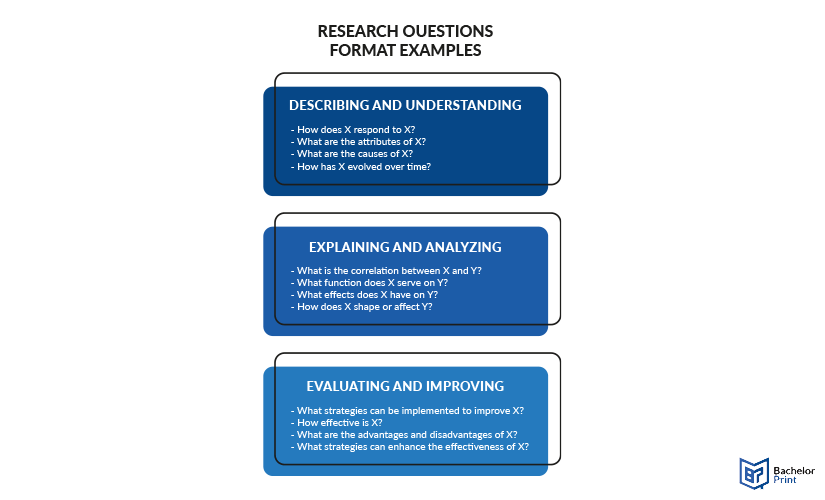
Research frameworks
There are three types of frameworks you can use as foundational elements to ensure that your research question is succinct.
- The PICO framework, which stands for Population, Intervention, Comparison, and Outcome, is commonly used in healthcare research to structure clinical questions. It helps researchers define the key elements of a research question, including the population of interest, the intervention, or exposure being studied, the comparison group, and the outcome of interest.
- The SMART framework, which stands for Specific, Measurable, Achievable, Relevant, and Time-bound, is widely used and helps ensure that the question is clear, quantifiable, feasible, aligned with the research objectives, and has a defined time frame for completion.
- The FINER framework, which stands for Feasible, Interesting, Novel, Ethical, and Relevant, provides criteria for evaluating the quality and appropriateness of research questions. It ensures that the question is feasible to address, interesting and relevant to the field, innovative, ethically sound, and directly related tot the research objectives.
Below, we have illustrated each framework with appropriate questions you can ask yourself in order to find out if your research question can be improved.
Dos & donts
Below you’ll find an illustration depicting what you should do and what you should not do when it comes to research questions.
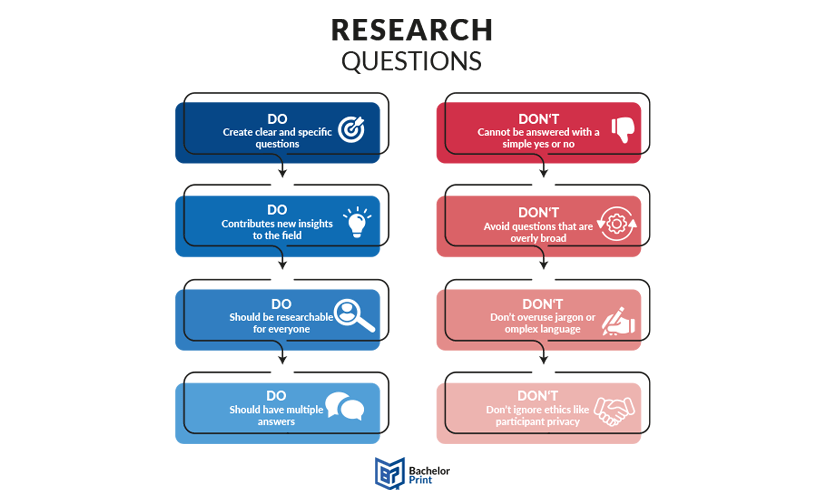
Below you’ll find a table with numerous good and bad examples of research questions together with explanations for each of them.
| Bad Research Questions | Good Research Questions |
Too narrow. Avoid questions that can be answered with a simple statistic or a mere “yes” or “no.” |
A proper amount of specificity. Results could serve as grounds for constructing an argument. |
This question is extremely broad, which would make research methodology fairly difficult. |
This question has a very clear focus for which data can be obtained, analyzed, and discussed. |
This question allows the collection of data, but it can't be used to create a valid argument given that the data is just factual information. |
This is a more subjective question that may lead to the formation of an argument based on the results and analysis of the data. |
This information can be obtained without the need to collect unique data. The question could be answered with a simple search and does not allow for analysis. |
This question is more complex and requires both investigation and evaluation, which will lead the research to form a compelling argument. |
Sub-questions
Sub-questions can be essential in research for clarifying complex topics and providing depth to the analysis when your main research question can’t be answered all at once. They are optional and should be used only if necessary to address the main question. If the main question is straightforward, sub-questions can be omitted. Let’s say that the main research question is “How has the transition to online schooling during COVID-19 pandemic affected sophomore and junior students’ academic performance and engagement?”. Some potential sub-questions could be:
Tips for good research questions
Crafting a good research inquiry is a critical step in conducting a successful research project, as we have learned. The selection of successful research topics is crucial for guiding the direction of a study and ensuring that the research addresses relevant issues within the field. Here are some general tips to help you develop a strong research question.
- Be specific and clear: A good question should allow for focused study and straightforward answers. Avoid being broad or vague since this could lead to a sprawling investigation.
- Make it measurable: Your research question should be framed in a way that allows for gathering and analyzing data. It should be possible to measure the aspects of the question through available methods.
- Ensure relevance: The question should be relevant to current issues or contribute to a field of study that interests you. It should address a gap in knowledge or add a new perspective to existing studies.
- Test your question: Before finalizing your research question, test it. Discuss it with peers, mentors, or through preliminary literature reviews to ensure it is focused and engaging.
The most important thing is that whatever subject you focus on, it should be interesting to you and your field. Because that way, the writing and analyzing process will be much more enjoyable and rewarding.
Note: Do not figure out your research question after you have finished your research paper.

FAQs
- What impact does incorporating technology into classroom instruction have on student engagement and academic performance in elementary schools?
- How does mindfulness-based stress reduction therapy compare to cognitive-behavioral therapy in reducing symptoms of anxiety and depression among young adults?
- What are the long-term effects of microplastic pollution on marine biodiversity in coastal ecosystems, and how can we mitigate these effects?
- To what extent do socioeconomic factors influence access to healthcare services among marginalized communities, and what policy interventions could address these disparities?
- How do leadership styles and organizational culture impact employee job satisfaction rates in remote work settings?
A well-developed research question identifies the main issue that the researchers want to investigate and provides a framework for gathering data to address that issue and also proposes a conclusive solution depending on the research type. It serves as a foundation for the writing process and guides the research project.
Research questions can be classified into three types:
- Descriptive research questions
- Quantitative research questions
- Mixed-methods research questions
- Descriptive questions
- Comparative questions
- Relationship-based questions
- Exploratory questions
- Predictive questions
- Interpretive questions

